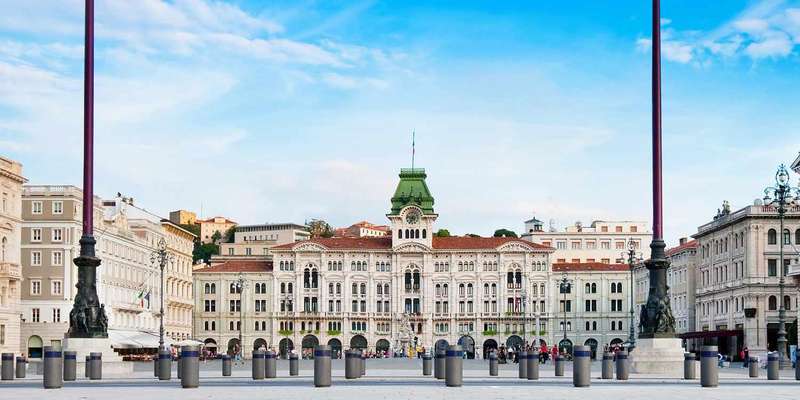- Home
- Useful Tips
- What makes the Palazzo...
Many travelers overlook Palazzo Gopcevich in their rush to see Trieste's more famous sights, missing one of the city's most intriguing cultural experiences. This 19th-century palace embodies Trieste's golden age as a cosmopolitan hub, yet 62% of visitors leave without stepping inside, according to local tourism boards. The hesitation often comes from not understanding what makes this particular palazzo special – its unique blend of architectural grandeur, historical significance, and accessible location right in the city center. Unlike crowded mainstream attractions, Palazzo Gopcevich offers a more intimate glimpse into Trieste's past without the queues or overwhelming crowds. The challenge lies in appreciating its layered history, from its neo-Renaissance facade to the important exhibitions housed within, which many pass by simply because they don't know how to approach it.


Why this overlooked palace beats Trieste's crowded attractions
Palazzo Gopcevich stands apart from Trieste's more tourist-heavy sites by offering an authentic slice of local history without the congestion. While Piazza Unità d'Italia draws the crowds, this elegant 1850s palace just minutes away provides equally stunning architecture with room to breathe. Its neo-Renaissance facade, adorned with intricate stonework and statues, showcases the wealth of Trieste's merchant class during its Habsburg-era prime. Inside, the airy courtyards and grand staircases transport you back to the city's golden age as a Mediterranean trading power. Unlike larger museums that can overwhelm, the palazzo's manageable scale allows you to appreciate each detail, from the original parquet floors to the ceiling frescoes that have survived untouched. Locals particularly prize it for hosting thought-provoking temporary exhibitions about Trieste's multicultural past, often overlooked in guidebooks but crucial for understanding this border city's unique character.
How to experience the palace like a Triestino
The secret to enjoying Palazzo Gopcevich lies in timing and perspective. Triestinos know to visit in the quiet mid-morning hours when sunlight streams through the upper windows, illuminating the building's architectural details at their best. Start by admiring the exterior's symbolic statues representing Commerce and Navigation – clues to the city's historic identity. Inside, don't rush past the staircase; its elegant curves and wrought-iron details are considered one of Trieste's finest examples of 19th-century craftsmanship. The first floor often houses exhibitions from the Civic Museums network, frequently focusing on Trieste's literary figures or Habsburg-era society. True locals always check the palazzo's event calendar for evening concerts in the courtyard, where the acoustics shine. For deeper insight, position yourself near guided tours (which frequently pass through) to catch fascinating anecdotes about the Gopcevich family and their role in shaping the city.
Pairing your visit with hidden neighborhood gems
Palazzo Gopcevich's central location makes it the perfect anchor for exploring Trieste's less-discovered cultural quarter. Just three minutes' walk away, the Serbian Orthodox church of San Spiridione reveals another layer of the city's multicultural tapestry with its Byzantine-style domes. Heading toward the canal, stop at historic Caffè Stella Polare, where local artists have gathered since the 1860s. The nearby Mercato Coperto offers an authentic lunch spot where vendors have served traditional buffets of boiled meats and sauerkraut for generations. For book lovers, the Antiquario Umberto Saba bookstore preserves the atmosphere of the early 20th century when Trieste was a literary capital. This walkable itinerary lets you experience the palace not as an isolated attraction but as part of Trieste's living cultural network – exactly how residents engage with it throughout their daily lives.
Making the most of your visit without overspending
Enjoying Palazzo Gopcevich doesn't require splurging on expensive tours. The building itself is free to enter during opening hours, with a modest fee only for special exhibitions – unlike many Italian cultural sites. Save by purchasing the Trieste Civic Card if planning to visit multiple museums, which includes palazzo exhibitions at a discount. Wednesday afternoons often see fewer visitors, while the first Sunday of each month offers free admission to all city museums. For budget-conscious travelers, the palazzo's detailed information panels (available in English) provide ample context without needing audio guides. Photography enthusiasts will appreciate that unlike stricter Italian landmarks, the palace allows non-flash photography throughout. Those wanting deeper insight can join the free guided walks offered by the tourist office several mornings weekly – just arrive early as groups are small. This approach lets you appreciate the palazzo's grandeur while preserving your travel budget for Trieste's famous coffee houses and seafood trattorias.



